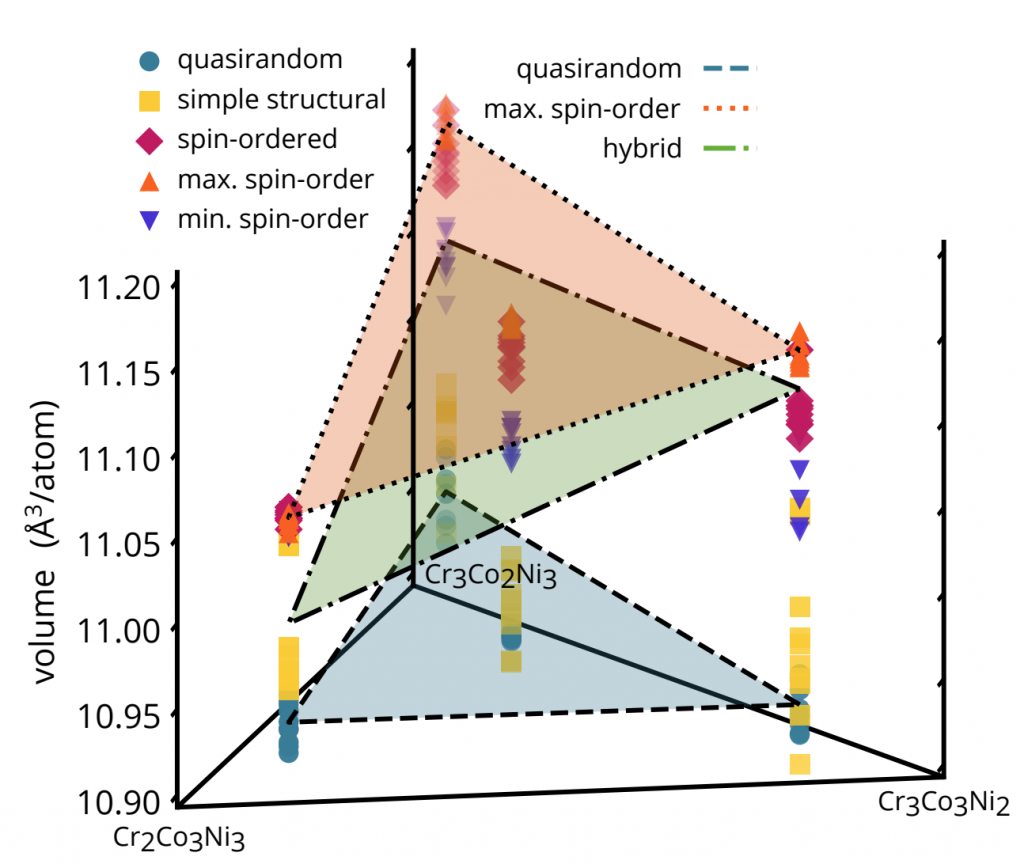Ordering Behavior in High Entropy Alloys
We work closely with the Minor and Ritchie groups to study the fundamental origins of damage tolerance in high-entropy alloys, including both ductile face-centered cubic systems and body-centered cubic alloys for refractory applications. Much of our recent work has focused on atomic-scale short-range ordering, which is potentially critical for a wide range of properties, but can be difficult to experimentally detect and characterize. We are interested in the impact of short-range order on mechanical properties, particularly through its effect on dislocation motion, as well as its role in the thermodynamics and phase stability of alloys containing several principal components. Our approach is multi-scale, involving density-functional theory, cluster expansions, and molecular dynamics and utilizes state-of-the-art techniques such as machine learning interatomic potentials.

The frustrated local moments of Cr atoms in random solutions of CrCoNi, as calculated using spin-polarized density-functional theory. Simulations suggest that these interactions could play a role in local chemical ordering.
The ab initio volume of several alloys in the CrCoNi system under several models of short-range order. The volume-composition landscape determines atomic misfit volumes, which are a key parameter in an alloy’s yield strength.

This research is supported by the Department of Energy, Office of Basic Energy Sciences

